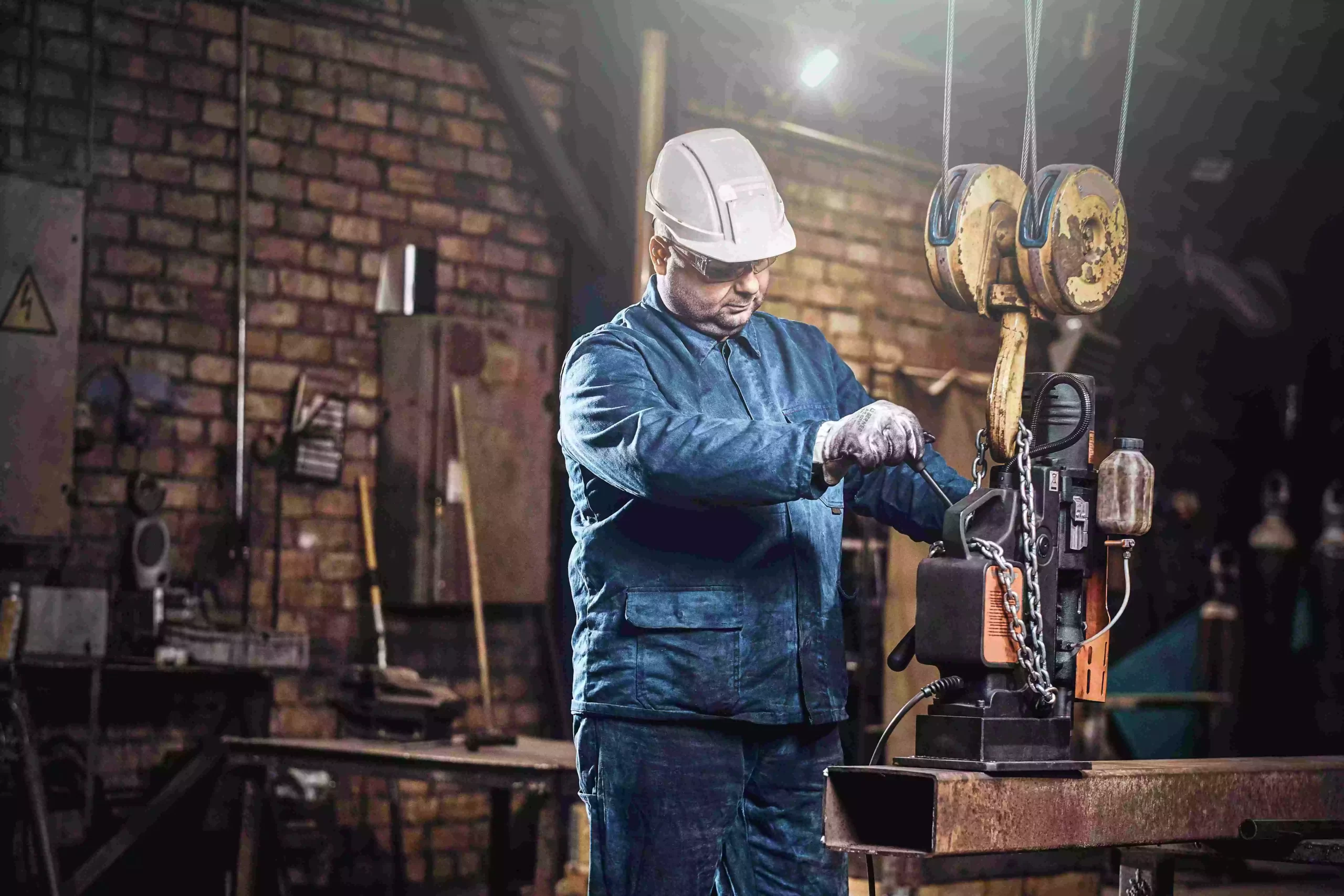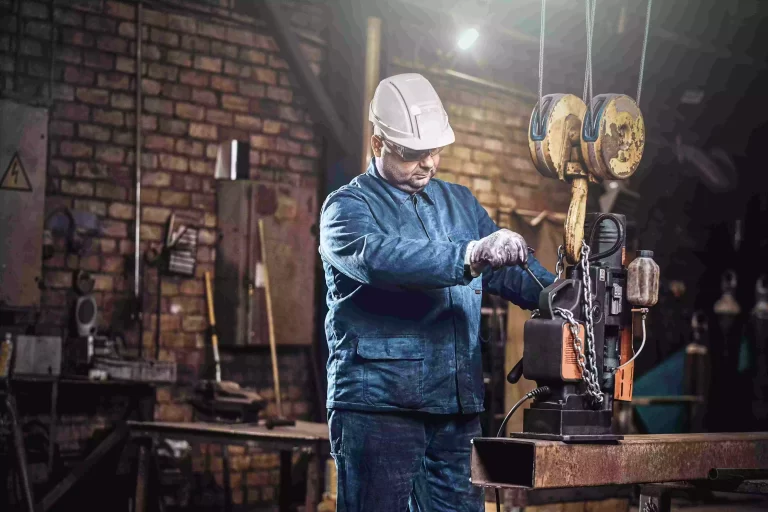Diagnosing and addressing common issues in electric chain hoists involves understanding the basic structure and operation of the hoist. This includes knowledge of the electrical and mechanical components and how they interact.
Identifying Common Problems in Electric Chain Hoists
Electric chain hoists are very common tools in industrial and commercial applications, as they are efficient and dependable when it comes to lifting heavy loads. However, like any piece of machinery, they’re susceptible to certain issues that might limit their ability to function. Early identification of these problems allows you to keep your operations safe and efficient.
Symptoms of Mechanical Failures
Common mechanical failures in electric chain hoists exhibit familiar signs like strange noises, erratic movements or trouble lifting a load. These symptoms are essentially rubber bands showing wear and tear on living organisms. For example, if a chain is worn, the sprocket will engage erratically or fail to engage at all.
Electrical System Malfunctions
Another common cable hoist power issue is electrical (especially electric chain hoists). This could be unresponsiveness in controls, erratic motor performance or even complete failure of operation. These issues can be caused by anything from a broken wire, bad circuit boards, or worn contactors. An extended service life without sufficient cooling may also result in electrical failure due to overheating of the motor.
Load-Related Problems
Load-related problems happen when the hoist cannot be used appropriately or beyond its capability. This is unsafe and can lead to damage to the hoist as well as being dangerous to those within the workplace. Signs of load-related problems include deformation of the lifting hook or chain and abnormal elongation of the chain links.
Diagnostic Techniques for Electric Chain Hoists
For electric chain hoists to last long and be safe to use, they must be regularly diagnosed. Use systematic diagnostics to find everything that may become a problem and thus a very expensive repair later, or worse, a safety problem soon. Using systematic diagnostics identifies possible problems that can aid in that preventative maintenance, and prevent expensive repairs or safety hazards.
Visual Inspections for Wear and Tear
Chain hoists are electrically operated hoists to carry loads, and a simple yet effective diagnostic method is a visual inspection of the affected area. It includes assessing chains, hooks, gears, and housing for wear and tear and other damage. Check for cracks on the housing, rust on metal components, or frayed wires.
Load Testing Procedures
Load testing is an important diagnostic method for assessing a load hoist’s capability under controlled conditions. It includes implementing load stepwise up to a full rated capacity of the hoist and observing its behavior.
If any odd noise, movement or lifting the load is performed with difficulty, the breakdown of mechanical or electrical components is present and needs to be attended to immediately.
Effective Solutions to Address Identified Issues
Once problems have been identified through diagnostics, implementing effective solutions ensures that your electric chain hoist continues to function efficiently and safely.
Fixing Electrical Malfunctions
Electrical malfunctions require systematic troubleshooting to determine the root cause. Ensure proper electrical flow by replacing damaged wires and connectors whenever possible.
If any circuit boards are damaged, such as by moisture ingress, or are already compromised, such as from heat, replace them with high-quality components that are designed for prolonged usage in harsh environments.

Preventing Load-Related Problems
The most basic step in avoiding load-related problems is to always strictly follow the load limits as specified by the manufacturer for your model of electric chain hoist. Check chains and hooks for modifications due to overloads. Use high-grade accessories like G80 lifting chains that will not be susceptible to load or wear and tear for a long time.
APOLLO, which is well-known for its quality craftsmanship and ingenuity, offers a comprehensive range of electric chain hoists designed for lifting solutions for different industrial requirements. Available customization options include explosion-proof and special surface treatment. Yours with options including explosion-proof and more surface treatments
Maintenance Practices to Minimize Future Issues
Proper maintenance of electric chain hoists is essential for ensuring their longevity and consistent performance. By implementing systematic practices, you can significantly reduce the likelihood of unexpected breakdowns and costly repairs.
Routine Inspection Schedules
Having a scheduled routine inspection is very important as it allows us to know how to identify the problems before they become bigger. Periodic examination should be done on chains, hooks, and gears, as well as electrical elements.
This means more than just ensuring that the wiring and contactors are functional and safe; besides ensuring safety, timely and efficient inspections delay the depreciation of your equipment and promote longevity.
Cleaning and Lubrication Protocols
The second pillar of proper maintenance is keeping parts clean and lubrication. Dirt and debris can find their way into moving parts, which can cause more friction and wear. Chains are best served grimy, cleaned with appropriate solvents and oiled with quality chain oils for heavy-duty machinery. It minimizes the wear of sprockets and chains and keeps them moving smoothly.
Choosing Reliable Products for Long-Term Efficiency
Selecting reliable equipment plays a pivotal role in minimizing maintenance demands and ensuring long-term efficiency. High-quality electric chain hoists are engineered to withstand rigorous use while maintaining safety standards.
The Advantages of Using APOLLO Electric Chain Hoists
If you are an industry looking for a best-in-class lifting solution, APOLLO electric chain hoists are your best choice. With features like explosion proof, frequency conversion, and adaptability of one phase to three phase/110V-575V, these hoists are ready to cater most unique application demands. Holding a monthly capacity of 5,000 units, these products offer you both reliability and scalability. Besides, it has an R&D group.
Customizable Options for Specific Industry Needs
APOLLO offerscustomization service (tailor them according to the required business operation), water-proofing, dust-proofing, or explosion-proofing functionalities, making them able to be used in many industrial environments. Chains can be customized, for an example, with grade 80 G80 or grade 100 T100, which can handle more load and are more durable.
FAQs
Q1: How frequently must inspections of electric chain hoists be carried out?
A: Depending on the usage frequency, the inspection should be carried out routinely if extensively used, once a month for moderate use, to detect possible problems as soon as they appear.
Q2: What type of lubricant should be used on electric chain hoists?
A: When it comes to lubricating your chains and sprockets, high-grade plant oils made with industrial-grade oils specifically for heavy-duty machinery are the best choice.
Q3: Can customized electric chain hoists improve operational efficiency?
A: Yes. Customization ensures compatibility with specific industry needs while enhancing safety and performance standards.


